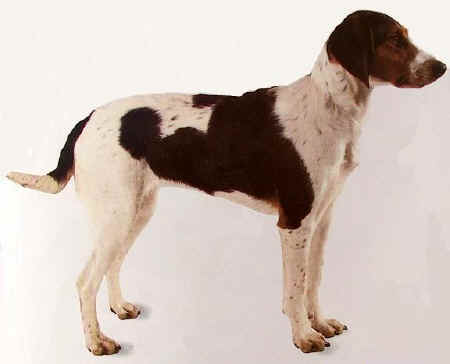
The smallest of the Norwegian hounds is the Haldenstövare (or Halden Hound) which got its name from a town in southeast Norway near the Swedish border. Most of the breed population is still found in that region, but this isn’t to suggest that a Haldenstövare can be found in every yard. It’s more common than it once was, but the breed first mentioned in 1895 was already disappearing in the 1950s, in part because industrialization reduced the hunting grounds in Norway, and a parvovirus outbreak in 1931 didn’t help matters. After WWII, a group of breed enthusiasts saved the breed from extinction, and in 1952, it was approved as a separate breed. That said, the number of Halden Hound puppies registered by the Norwegian Kennel Club is only between 7 and 21 a year these days, and it’s exceedingly difficult to find available puppies outside of Norway.
As for its history, this hunting hound was developed in the latter half of the 19th century by crossing Beagles, local scenthounds, and foxhounds from England (though some maintain that it came from crosses between selected Norwegian hounds with English, French, German and Russian hounds). It’s primary job was to hunt small game, especially the Norway hare. Hare hunting was already a favored sport in Norway in the 17th century, and a need for a hare hunting dog spawned the eventual creation of several Norwegian hare dogs, including the Dunker Hound, Hygen Hound, and the Haldenstövare. The latter is especially prized by hunters in Norway for its speed, exceptional hunting instincts, strong nerves, and the ability to work in touch conditions: Deep snow, forested mountain terrain, and freezing temperatures.
Non-hunters love this good natured breed because it loves everyone in the family. Cheerful and polite, it’s not a good match for someone unaccustomed to an active hound, or to anyone seeking a guard dog. This dog likes everyone.
The Haldenstövare is recognized by UKC and FCI, but not by the AKC.
Images: Haldenstovare By Sabine and shared under the terms of the GNU Free Documentation license
